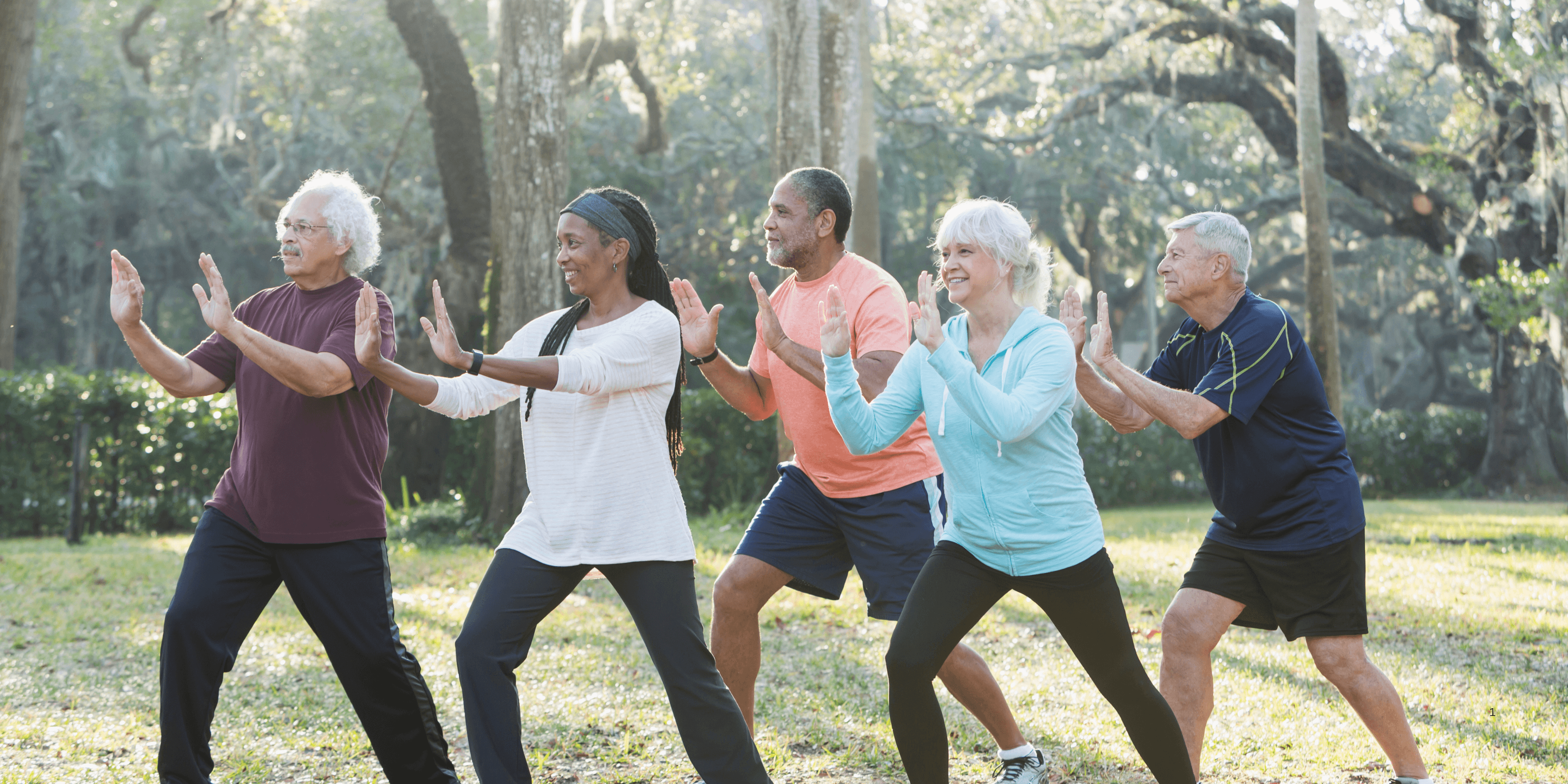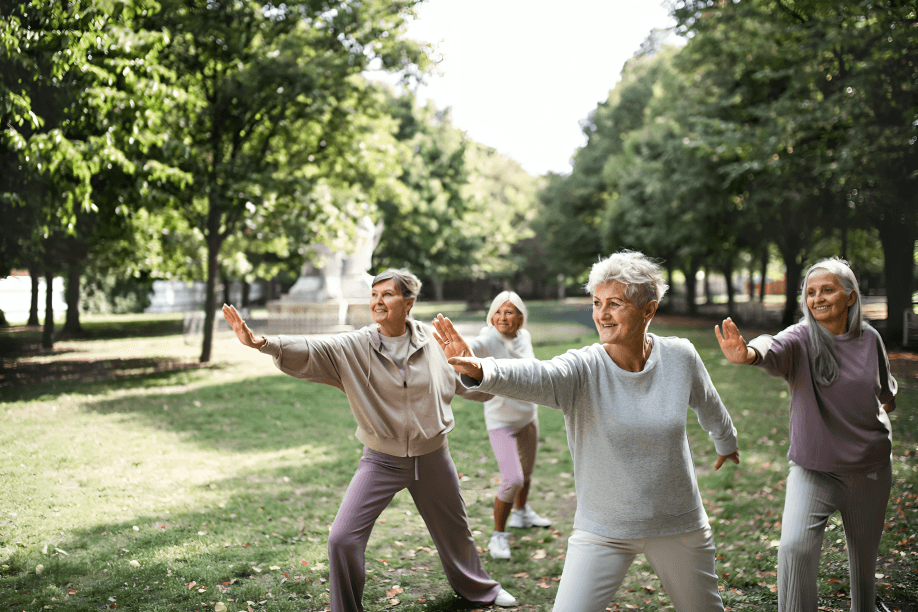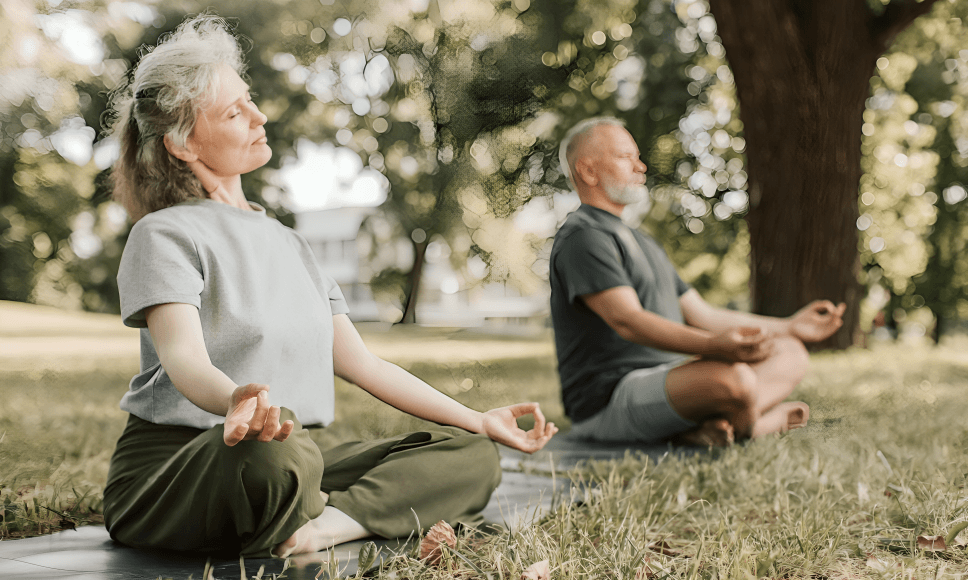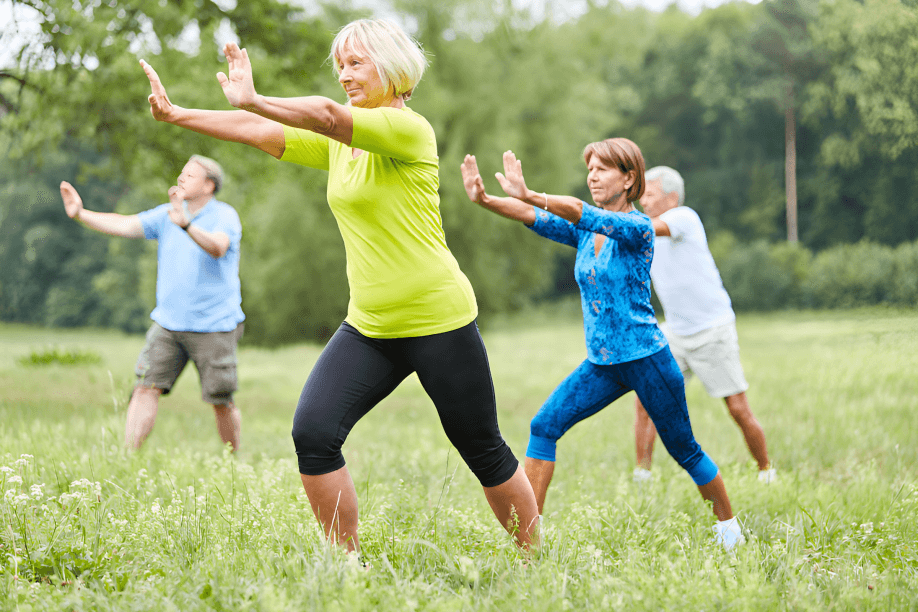
“
The benefits of yoga & tai chi for seniors extend far beyond physical fitness—they promote mental clarity, flexibility, and community bonding. Whether it's reducing the risk of falls, improving breathing patterns, or enhancing focus, yoga and tai chi help seniors reclaim control over their health in a peaceful yet powerful way.1
1
”
Philosopher Confucius once said, "It does not matter how slowly you go as long as you do not stop"—a truth echoed in tai chi’s patient, flowing movements benefiting aging minds. 1
Yoga helps seniors improve flexibility through stretches that reduce stiffness in joints, which can significantly relieve arthritis discomfort and increase mobility for daily activities like walking or bending. 2

Practicing tai chi enhances balance by training the body’s sense of position and motion, helping older adults reduce the risk of falls and maintain independence in everyday physical routines.
Yoga builds strength gradually in core muscles, legs, and arms without stressing joints, making it a safe resistance training method for seniors needing better stability and muscle preservation. 3
Tai chi’s flowing sequences sharpen memory, spatial awareness, and focus, engaging both the body and brain in mindful practice proven to help reduce cognitive decline in older populations. 4
Seniors doing yoga regularly report better sleep patterns, with poses that calm the nervous system and breathing that slows heart rate, making it easier to fall and stay asleep. 5
Gentle yoga styles, like chair yoga or restorative yoga, allow even those with limited mobility to gain flexibility, muscle tone, and relaxation, proving exercise remains possible at any ability. 6
Both practices help lower blood pressure by calming the nervous system and reducing stress hormones, contributing to long-term cardiovascular health for elderly individuals at higher health risk. 7
Practicing yoga or tai chi increases energy levels by improving circulation and breathing, allowing seniors to feel less fatigued and more alert in both body and mind throughout the day. 8
Studies show that tai chi helps improve posture by teaching proper alignment, which in turn reduces back pain, spinal compression, and poor habits formed over decades of muscular compensation. 9

Yoga’s focus on the present moment helps seniors deal with feelings of loss, grief, or isolation by nurturing mindfulness and acceptance—tools useful for navigating emotional challenges of aging.
Tai chi creates a meditative flow where mind and movement merge, helping older adults manage anxiety and depression without the need for strenuous physical exercise or complicated routines. 10
Practicing yoga in groups fosters social interaction, helping seniors stay connected, make friends, and reduce loneliness—one of the greatest mental health risks among older populations today. 11
Tai chi improves joint range of motion by encouraging consistent, gentle movement, helping reduce inflammation and pain in knees, hips, shoulders, and wrists without sharp impact or strain. 12
Yoga and tai chi strengthen the pelvic floor, enhancing bladder control and core support, which can greatly benefit seniors dealing with incontinence or lower back discomfort due to muscle weakness. 13

The low-impact nature of tai chi makes it ideal for post-rehabilitation, helping seniors regain strength, balance, and confidence after surgery, stroke, or injury without overexertion or risk.
Yoga breathing techniques (pranayama) have been linked to reduced stress, lower cortisol levels, and better concentration, helping elderly individuals feel more emotionally stable and mentally centered. 14
Tai chi nurtures a connection between body and surroundings, making seniors more alert and aware of physical space, which is crucial in preventing tripping, falling, or loss of balance. 15
Yoga improves circulation to extremities through inversion and twisting postures, assisting seniors who struggle with cold hands and feet, varicose veins, or sluggish blood flow in the legs. 16
Doctor Herbert Benson, a pioneer in mind-body medicine, proved that meditative practices like tai chi trigger a “relaxation response,” lowering stress and fostering healing in both mind and body. 17


